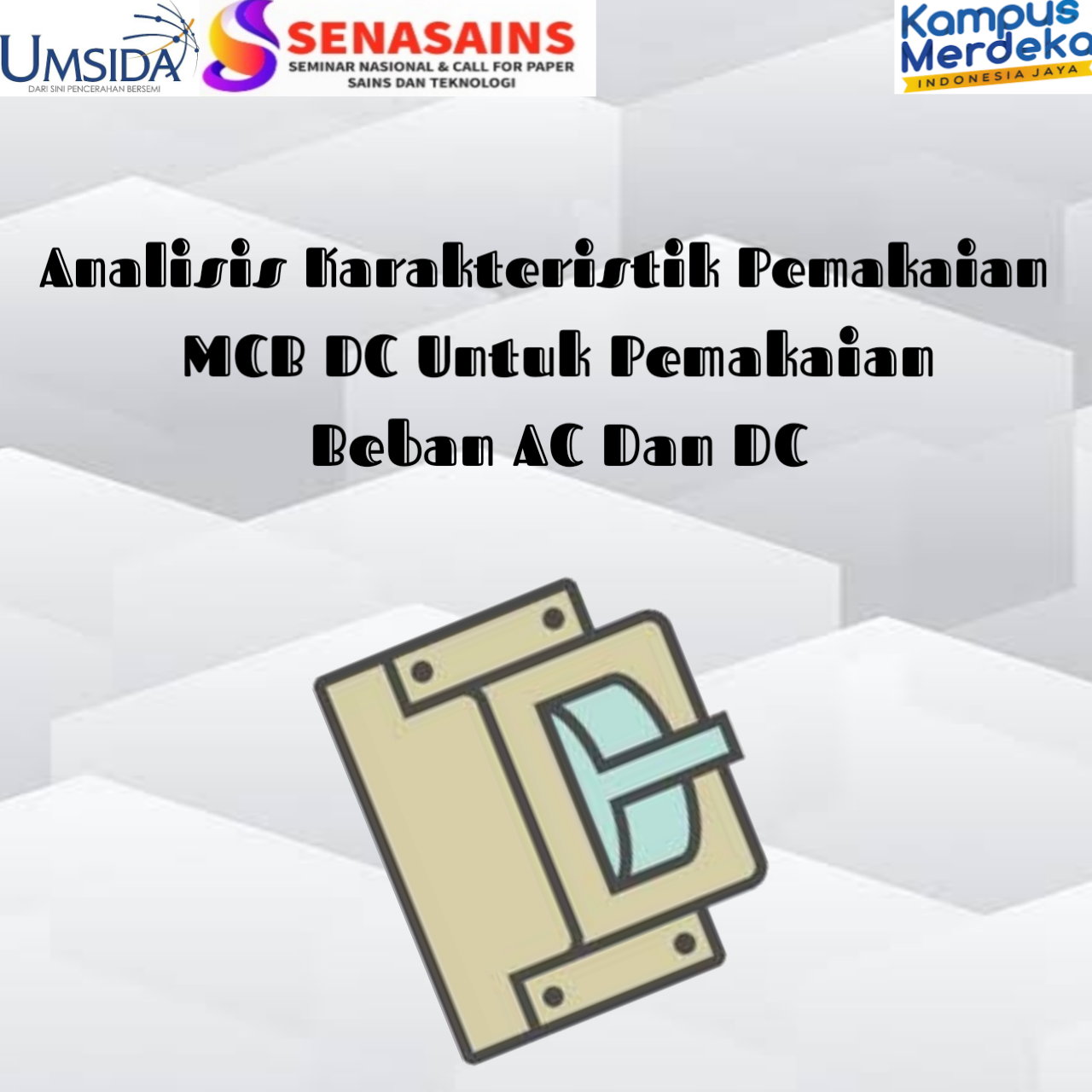Analysis of DC MCB Usage Characteristics for AC and DC Load Usage
Analisis Karakteristik Pemakaian MCB DC Untuk Pemakaian Beban AC dan DC
DOI:
https://doi.org/10.21070/pels.v2i2.1243Keywords:
Earth fault, ELCB, Fuse, MCB, Over CurrentAbstract
One of the most important and expensive power lines in the distribution method is the low line voltage. In case of overload or short circuit current, it protects the electrical installation. MCB is an important component in electrical installations. The formation of sparks due to a short circuit can eventually cause a fire which has the potential to cause a fire, which is an unwanted MCB nuisance. This MCB can be used as a direct current breaker with a load, either manually or automatically. When the MCB is switched from "ON" to "OFF", the mechanical part in the MCB cuts off the electric current. The manual method involves turning off the toggle switch in front of the MCB (usually blue or black). The finished tool is then tested to see how well components such as AC MCB, DC MCB, Volt meter, LED lamps, Outlets, and lamp fittings perform. The function of the analysis of the characteristics of the use of DC MCBs for the use of DC loads works to compare the use of DC MCBs on AC loads and which ones are the most effective and the circuit is given a load until the MCB trips and amperes and volts are measured in the circuit.
Downloads
References
. Standar Nasional Indonesia. 2011. Persyaratan Umum Instalasi Listrik 2011 (PUIL 2011). Jakarta: BSN. [2]. M. S. Sachdev and T. S. Sidhu, “Laboratory for research and teaching of microprocessor-based pwer system protection,”IEEE Transactions on Power System., vol.11, no.2, pp. 613-619, May 1996.
. Group Schneider. “Low Voltage Circuit Breaker Application Guide”. Mastering electrical power, Merlin Gerin.2009.
. Square D Company Schneider Electric, “Circuit Breaker Characteristic Trip Curves and Coordination, “Cedar Rapids USA, August. 2001.
. Charles H. Flurscheim (ed), “Power Circuit Breaker Teori dan Desain”, Vol.2 IET.1982.
. M. Martel, M. Anheuser, and F. Berger, “A study of arcing fault in the low-voltage electrical installation,”Electr. Contacts, Proc. Annu. Holm Conf.Electr. Contacts, pp. 199-209, 2010, doi:10.1109/HOLM.2010.5619540. https://remote-lib.ui.ac.id:2082/document/5619540
. Gokhan Ece, F. M. Wells, and H. G. Senel, “Analysis and detection of arcing faults in low-voltage electrical power systems,”Mediterr. Electrotech.conf.-MELECON, vol.3, 1994, doi: 10.1109/melcon.1994.380949. https://remote-lib.ui.ac.id:2082/document/380949.
. Jamaaluddin, I. Robandi, I. Anshory, Mahfudz, and R. Rahim, “Application of interval type-2 fuzzy inference system and big bang big crunch algorithm in short term load forecasting new year holiday,” J. Adv. Res. Dyn. Control Syst., 2020.
]. M. Muchlis and A. D. Permana, “Proyeksi Kebutuhan Listrik PLN 2003 s.d. 2020,” Pengemb.Sist.
Kelistrikan dan Menunjang Pembang. Nas. Jangka Panjang, p. 11 Halaman, 2003.
. B. García-Domingo, M. Torres-Ramírez, J. De La Casa, J. Aguilera, and F. J. Terrados, “Design of the back- up system in Patio 2.12 photovoltaic installation,” Energy Build., vol. 83, pp. 130–139, 2014.




